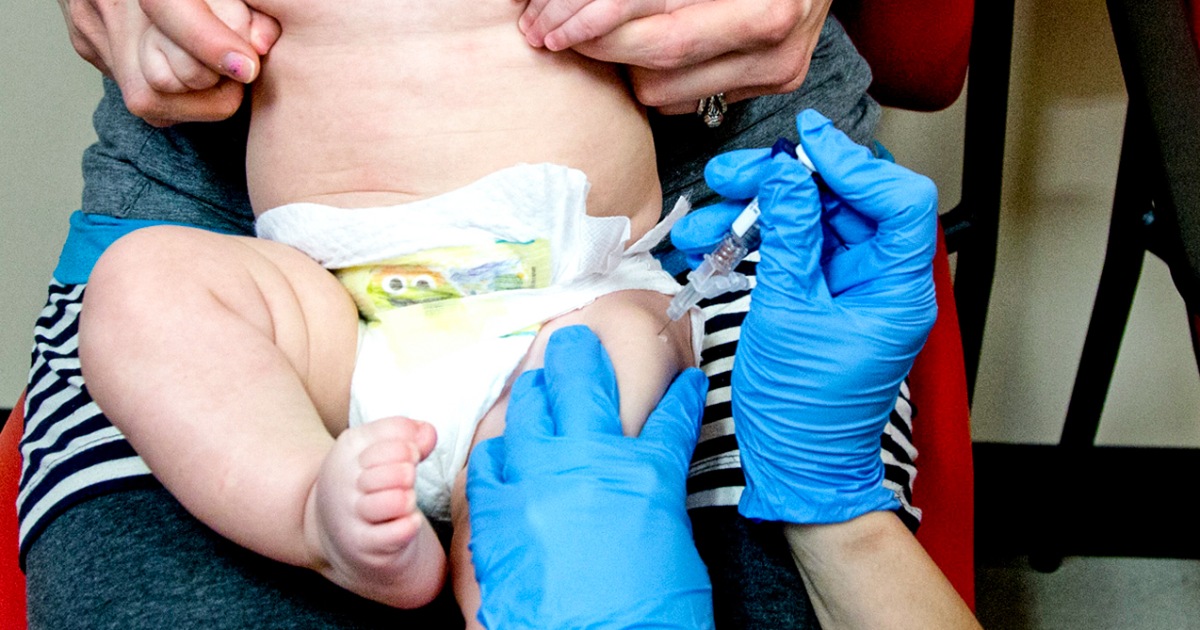

Aluminum in childhood vaccines is a target of vaccine skeptics, who blame the ingredient on myriad health concerns. But a study of more than 1 million people, published Monday in the Annals of Internal Medicine, found no link between aluminum in vaccines and an increased risk of 50 chronic conditions, including autoimmune diseases, allergies and autism.
Health and Human Services Secretary Robert F. Kennedy Jr., who has spread vaccine misinformation for years, said on a podcast in 2024 that aluminum in vaccines is “extremely neurotoxic.” (An HHS spokesperson did not respond to a request for comment.)
Senior study author Anders Hviid said that, as a parent, he understood the concerns about vaccine safety.
“Our study addresses many of these concerns and provides clear and robust evidence for the safety of childhood vaccines. This is evidence that parents need to make the best choices for the health of their children,” said Hviid, who is a professor and the head of epidemiology research at Statens Serum Institut, a sector of the Danish Ministry of Health focused on combating and preventing infectious diseases.
Hviid and his team used Denmark’s nationwide registry to look for any connections between aluminum exposure from childhood vaccines and 50 chronic disorders, including 36 autoimmune disorders, nine allergy or asthma conditions, and five neurodevelopmental disorders including autism and ADHD.
The study looked at more than 1.2 million people born in Denmark from 1997 through 2018 and followed them until the end of 2020. Because health records in Denmark are meticulously kept by government agencies, the researchers were also able to compare children who received more aluminum in their vaccines by age 2 compared those who received less. The study didn’t include unvaccinated children.
The researchers found no link between aluminum in childhood vaccines and any of the 50 conditions.
Ross Kedl, a professor of immunology and microbiology at the University of Colorado Anschutz Medical Campus, said Scandinavian public health studies are of uniquely good quality.
“[This excellence is] partly because they have, for a long time, had such a unified health system,” said Kedl, who wasn’t involved with the new study. “Everyone is tracked for life from birth and you can go back for many years and ask, ‘Can we find a link between something that happened in the past and in the future?’”
Hviid said the catalyst for the Danish study was a widely criticized Centers for Disease Control and Prevention-funded study, published in 2022, that suggested a link between aluminum in childhood vaccines and increased asthma risk. The study, however, didn’t distinguish between aluminum from vaccines and aluminum from other sources. It also contained inconsistencies: for example, in one group the researchers analyzed, more aluminum exposure wasn’t linked to increased asthma risk, contrary to the study’s conclusions.
“If you are looking at people who got vaccines that contained aluminum versus those who had fewer, you have to control for confounding factors, you need to know that the only different source of aluminum these people received was from those vaccines,” said Dr. Paul Offit, director of the Vaccine Education Center and physician in the Division of Infectious Diseases at Children’s Hospital of Philadelphia.
The CDC study was not able to do that, Offit said. Aluminum is the third-most abundant metal on Earth and people are exposed to the metal through breast milk, air and water, he said.
“Aluminum is part of our daily diet and has been since the beginning of time. That is the point people don’t understand,” said Michael Osterholm, director of the Center for Infectious Disease Research and Policy at the University of Minnesota.
Neither Osterholm nor Offit were involved with the new study.
CDC officials said at the time that it appears that aluminum-containing vaccines “do not account for the overall trends that we see.”
Osterholm said the strength of the broader research is that it piles on dozens of studies that have drawn the same conclusion as the new study.
“One study does not make for a safe vaccine supply or not,” he said. “It’s the accumulative data that comes from many studies that have been done, that together demonstrate the safety of vaccines.”
Why is aluminum in vaccines?
Different ingredients are added to vaccines for different reasons. Aluminum — added to vaccines as aluminum salts — is what’s known as an adjuvant. These additives act as a beacon for the immune system, pointing out invaders and prompting the body to produce antibodies against an antigen, or the virus or bacteria a vaccine aims to protect against.
“You can’t just have an antigen and have an immune response, you need some kind of stimulus to trigger that response,” said Kedl, of the University of Colorado. “An adjuvant is a substance that alerts the body’s immune response to the vaccine’s antigen. Without adjuvants, you actually create tolerance, which is the opposite effect of what you want a vaccine to do.”
In the U.S., aluminum salts are used in the vaccine for diphtheria, tetanus and pertussis (DTaP) as well as vaccines for pneumonia, HPV and hepatitis B.
“The aluminum that is in vaccines is in the form of extremely small amounts of aluminum salts which is not the same as elemental aluminum which is a metal,” Hviid said. “It’s really important for parents to understand that we are not injecting metal into children.”
Aluminum salts from vaccines are injected into the muscle and most are cleared away by the body and filtered out through the kidneys within two weeks, though small amounts can linger for years.
“The aluminum-containing vaccines form the backbone of our childhood immunization programs,” Hviid said, adding that there are currently no viable replacements. “It is critically important that we keep politics and science apart in this issue. If not, it is the children, including U.S. children, who are going to suffer the consequences.”